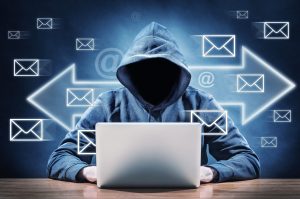Despite the fact that dedicated filters have been designed by mail providers and most people are well aware of the threat they represent, phishing attacks still remain an effective weapon in the cybercriminal arsenal.
Time and again, cybersecurity experts explain that the human element is to blame. Threat operators design their phishing strategies to maximise weaknesses, from playing on people’s vanity with social engineering tactics, to providing shortcuts that users are only too happy to take to save themselves a few extra clicks.
Here, we’ll examine these potentially dangerous cyberattacks and explore some of the reasons they continue to be a problem for enterprises across the world.
What is a phishing attack?
Phishing messages can arrive by text or email and are malicious content aimed at convincing their recipient to take a specific action. In most cases, this will have a detrimental impact on either the individual or their company.
The email will appear to be legitimate and may resemble an authentic missive from a trusted organisation, entity, or colleague to reassure the victim that any included request is valid. Within the email body or included in an attached document will be specific traps. These can be malicious links that redirect users to pharming or phishing sites where their passwords and usernames are harvested, or may download malicious software when clicked on.
What are the effects of phishing attacks?
While some phishing emails are poorly executed to the point of being easy to identify, others are far more insidious. If they successfully steal user credentials, cybercriminals can access other networks spreading laterally through a company’s infrastructure. If they fool users into downloading malware, the consequences can involve ransomware being deployed, leading to data breaches and expensive fines.
Why are people fooled by phishing techniques?
Cybercriminals are now weaving increasingly more detailed and layered phishing attacks. A modern phishing email may not only contain the authentic logo of a firm but use an identical template and even same the style of copywriting. Emails may also include links to other sources that have also been faked to add greater authenticity.
Malicious content is set to make recipients feel as if it’s the most natural and easy action to take to click on a link or download an attachment. They can even spoof email addresses so that victims will feel comfortable thinking they’re communicating with someone they’re familiar with. Cybercriminals will also use any available content on their victims they can find online, informing their attacks in technique known as spear phishing.
Premium protection levels
At Galaxkey, we’ve created a secure work platform that equips enterprise professionals with comprehensive tools to function free from cyberthreats. Our system offers a suite of secure email options from detailed verification and tracking to digital sign options. Firms looking to protect against data breaches can use the powerful three-layer encryption to ensure all their confidential information remains indecipherable to malicious operators. Get in touch with our expert team for a free two-week trial and step up your security.



